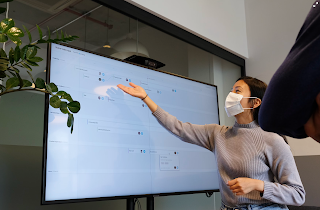Presentation

When we think about the skills required by developers, we never consider the soft skill to present an idea to others. This is not something easy to train, but it is definitely something that can be trained. Drawing One of the most important features is to sketch some visual representation of your idea. The most used (and my best recommendation) is draw.io . It has a lot of easy-to-use features, a large library with Cloud provider symbols that will make your sketch shine, and of course, it is free. It also integrates with Confluence ( the Wiki in JIRA), so you can also use it to write documentation for your tasks. The second recommendation here is another free online tool called Excalidraw . This one does not have a lot of exterior images, but it is the simplest and most productive one. You have to focus only on the content, no time to waste with cosmetics. This one is my favorite to use in video calls. Text editing in MD Another great-to-have skill you have to learn is adding som...






